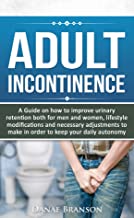Enuresis
Nighttime loss of bladder control, or bed-wetting, usually in children.
Clstr1:
Wik1: W074
Diagnoses: Enuresis
USPatnts:
WrldPatnts: 10% of 6-7-year olds
SexRatio:
AveOnset: 5 Years
Brain Area:
Symptoms: Bedwetting decreases to 0.5% among adults
Progression & Effects:
Productive Therapies: have children drink 40% of liquids by noon, 40% more by 4:30 p.m. & 20% in the evening; hypnotherapy
Clstr4:
Wik4:
Patient Organizations:
Researchers & Hospitals:
Celebrities:
Other:
Youtube Video:
Managing Bedwetting in Children
Youtube Video:
How Common is Adult Bedwetting?
Amazon or Library Book: Adult Incontinence
Click the book to link or order from Amazon.

